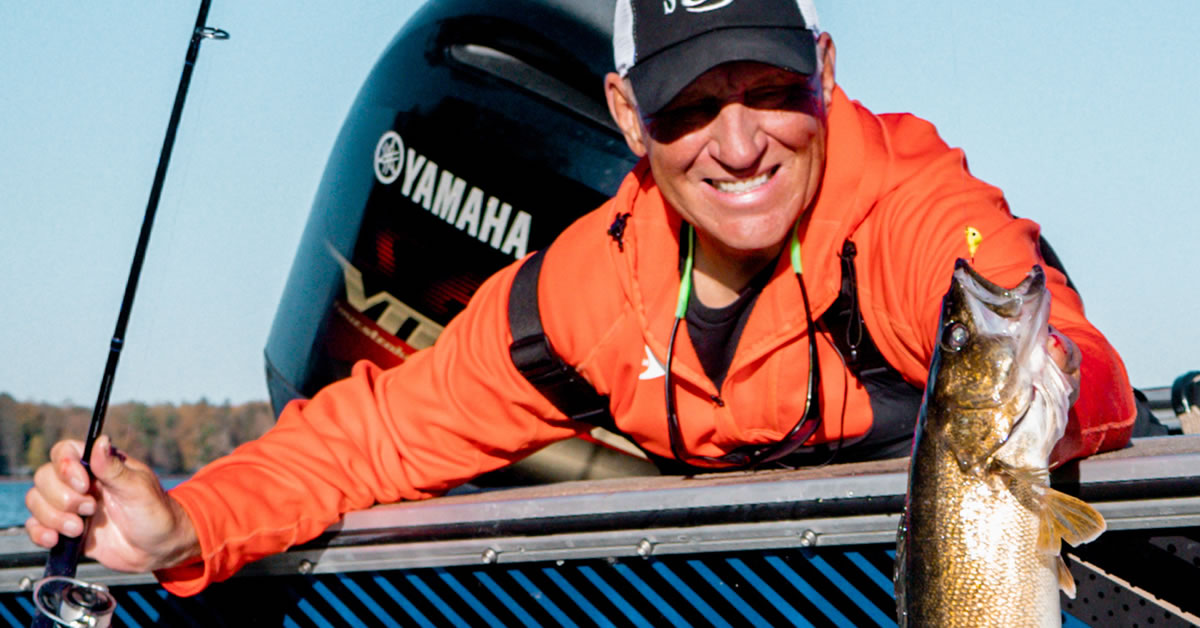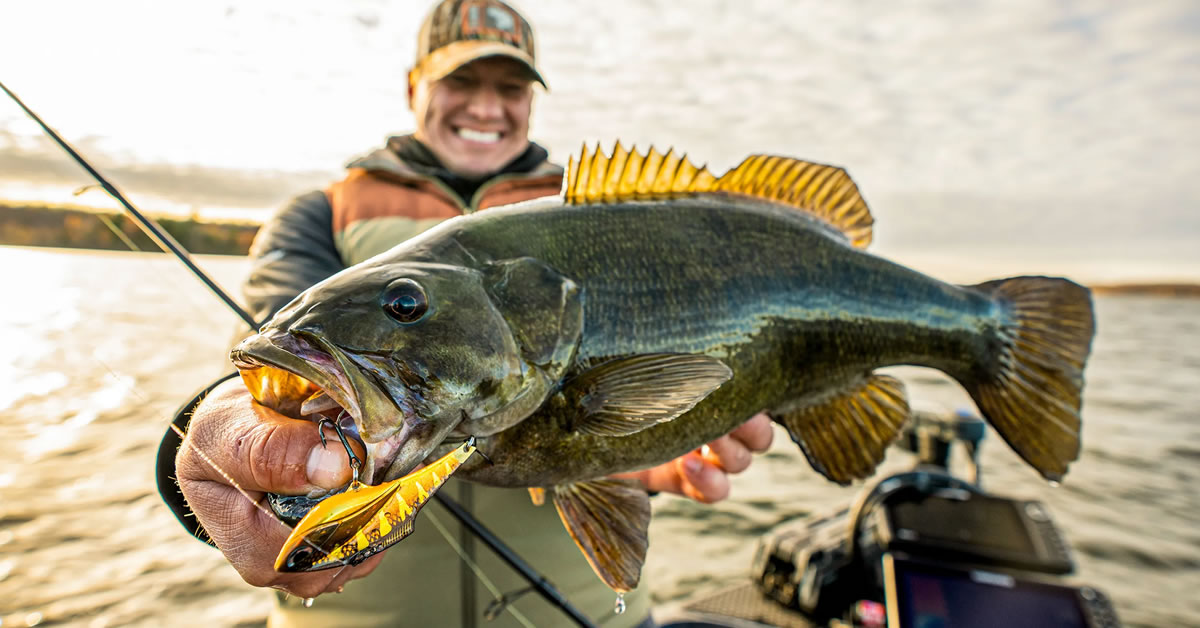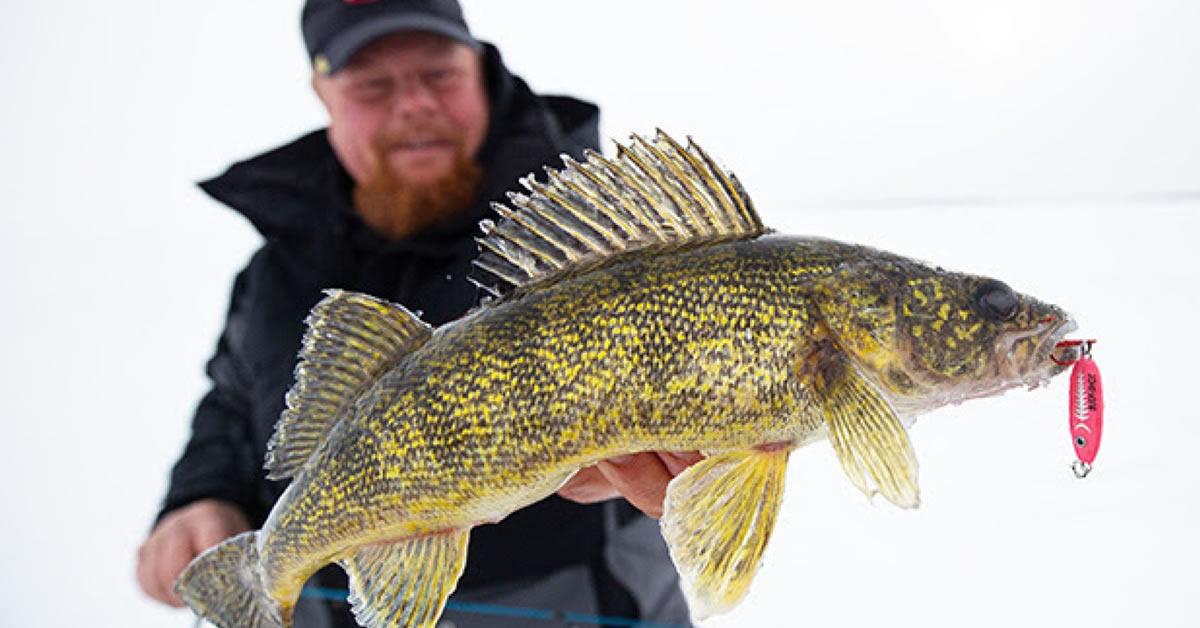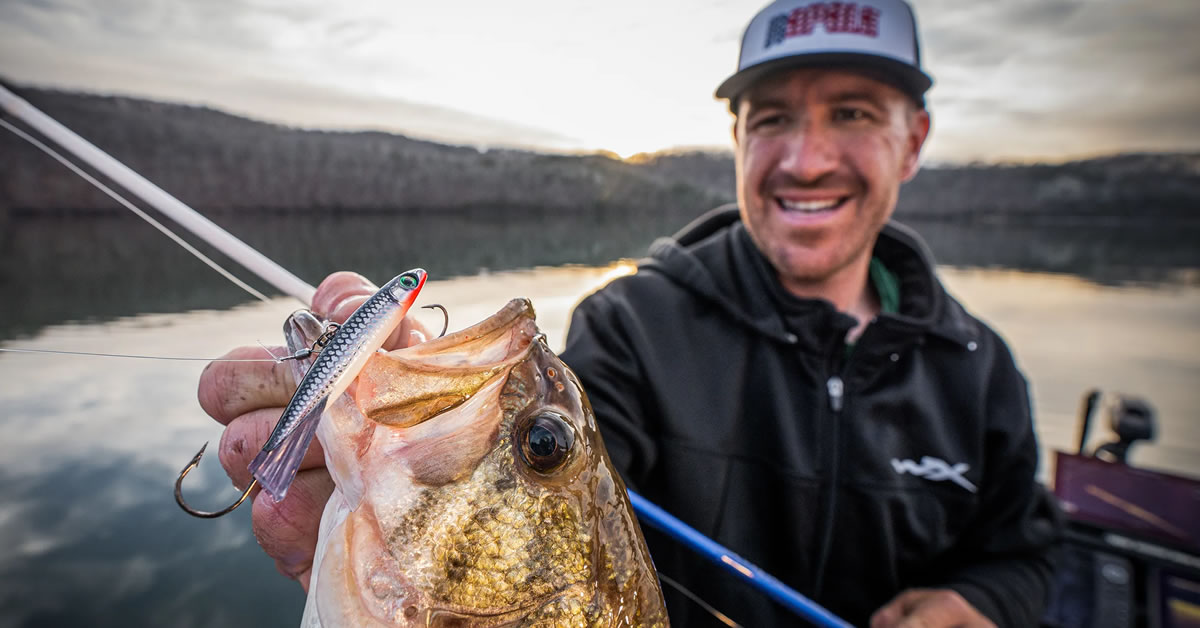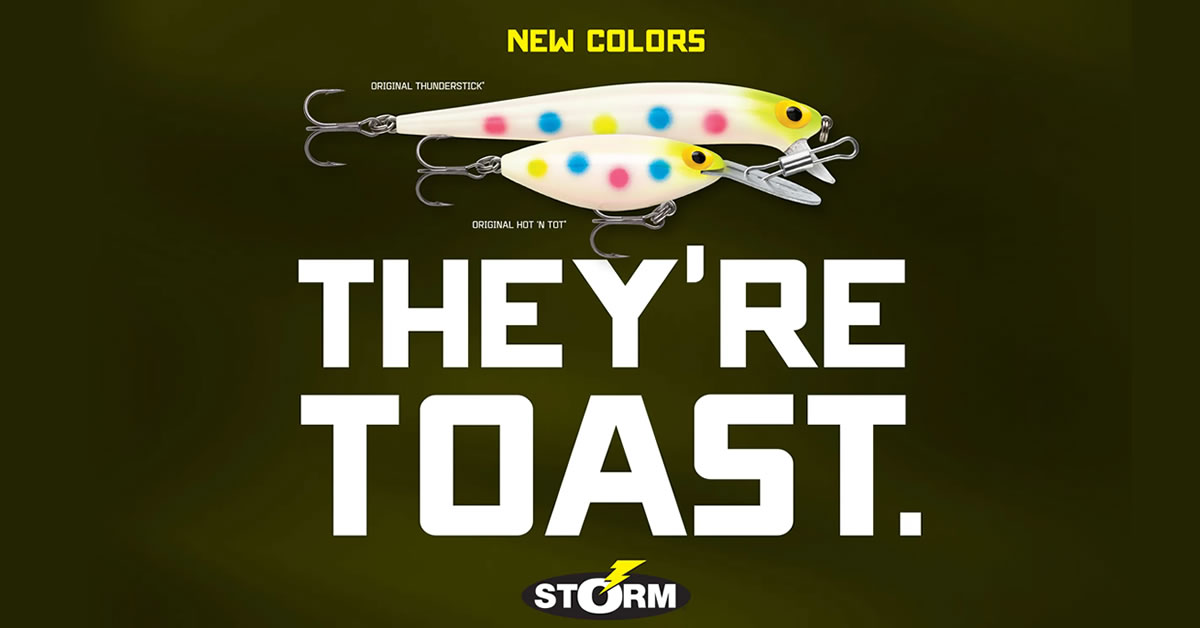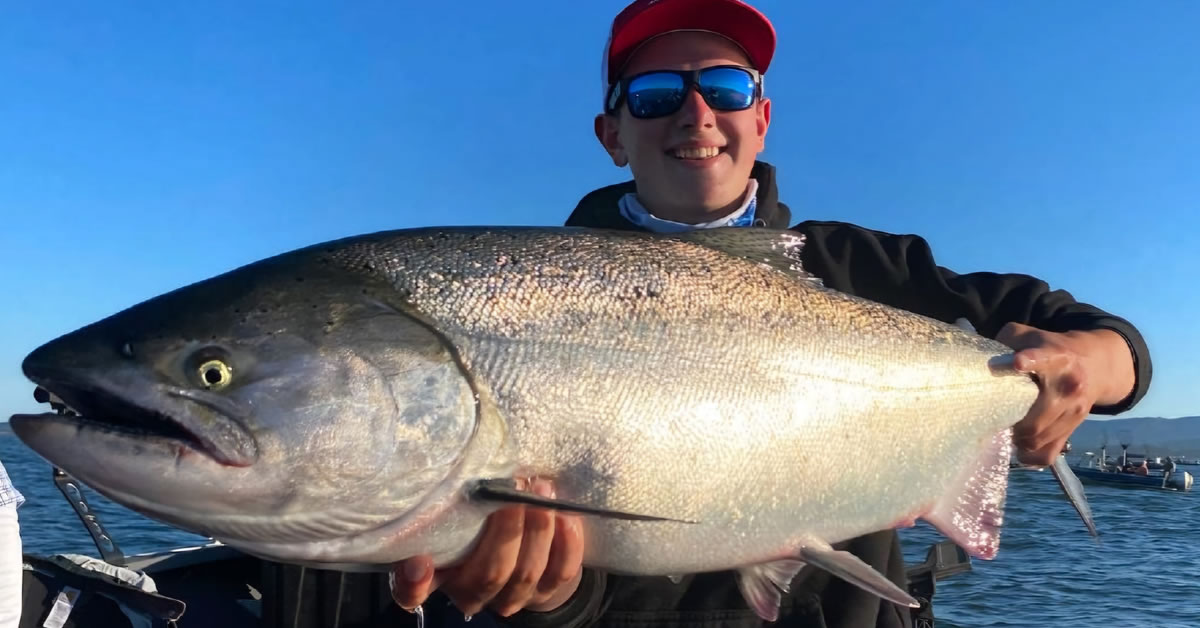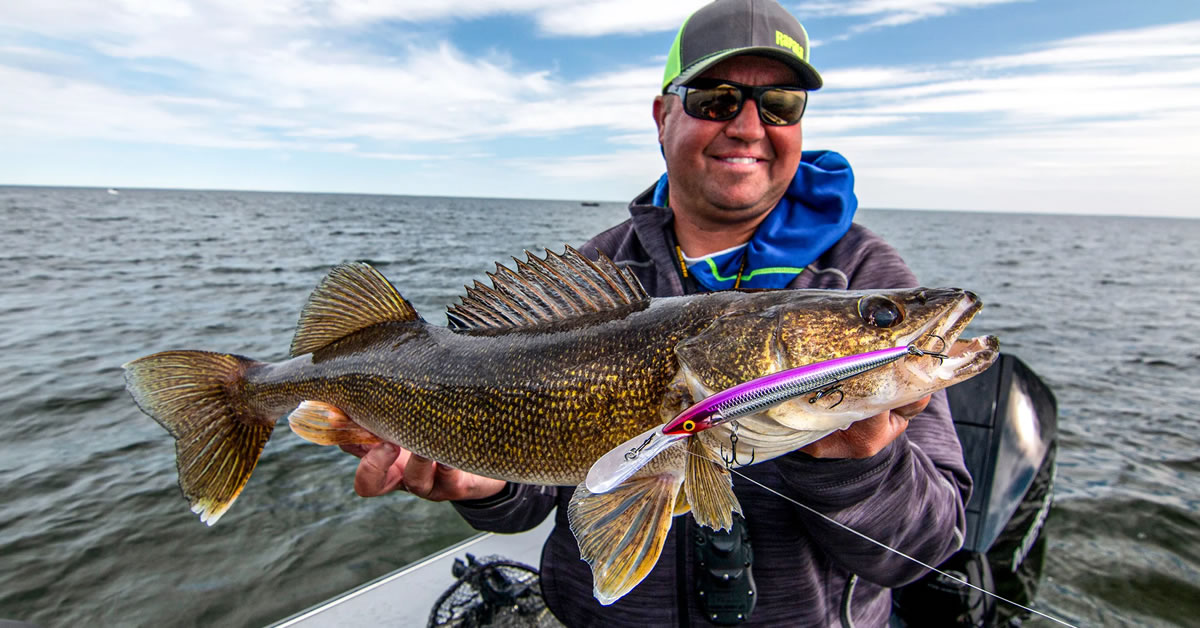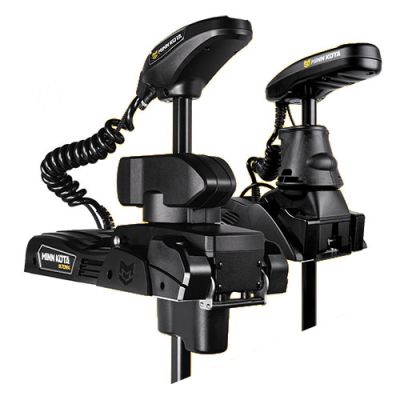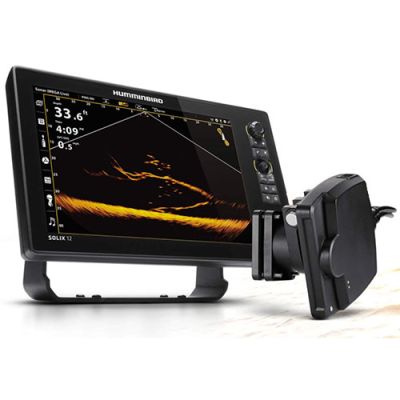It's Time....
by Steve HuberWell, here it is, March already! You do realize that the winter's almost gone and you'll be fishing pretty soon, don't you? Well, trust me, you will! And let me guess, even though you promised yourself that "this year is gonna be different", you still haven't touched your fishing tackle from way last fall, the last time you used it.
As a matter of fact, I'll bet that it's still sitting in the corner of the garage, right where you put it when you got back from that last trip, isn't it? C'mon, don't be ashamed to admit it, I'm right, aren't I?
Well, that's ok, cuz you still have time bubba. The rivers are still a little too ice clogged for consistent fishing right now, and if you get off your behind RIGHT NOW, you can get everything done in time.
First of all, you need to go through your boat. Can you remember the last time you actually looked at the trailer (well, other than that time you backed up a little crooked and dinged the back bumper)? NOW is the time to go through everything and make sure that it's up to snuff for the new season.
Check the air in the tires. Make sure that you read the specs for air pressure and with a good gauge, make sure the tires are inflated to the proper pressure. More trailer tires are destroyed from under-inflation than any other reason. If a tire is under-inflated, it will build up excessive heat, causing premature failure. And that makes it a real problem when you're on the interstate, eagerly anticipating that first bite of the season and all of a sudden, one of the trailer tires shreds and ruins not only your day, but probably the rim as well. That's providing you don't lose control of the vehicle and risk everything. While you've got the air compressor and the tire gauge, make sure to check the spare. Ah, you do have a spare trailer tire, don't you? Ok, you'd better get a pencil and paper and start a list.
Ok, the tires are fine, what's next? Pull the car out of the garage and back the boat in. Block the wheels (or leave the boat hooked to the truck) so that it won't roll and jack the trailer up so that one wheel is off the ground. Grab the tire on the top and bottom and try to wiggle it. If you can get movement out of the tire (other than round and round), you might have a loose or worn wheel bearing. That needs to be checked out, carefully. You've got at least two tires, so repeat the same procedure for the other side. You don't want excessive side to side play, that indicates either the bearing is loose or worn out. Either are recipies for disaster sometime down the road.
When was the last time you re-packed the wheel bearings on the trailer? Can't remember, can you? All right, add another thing to the list, wheel bearing grease. Make sure that it's the right kind of grease, the stuff formulated for boat trailers. If you don't know for certain, (I know it's not manly) ASK! I'm not going to go into the procedure for re-packing wheel bearings. If you don't know how to do this, you probably do know someone that does, ask your buddies. Heck, for some beer afterwards, you can probably get him to do it. While you've got everything apart, make sure that you check the axle spindles for grooving and wear. If there's any signs of excessive wear, it's probably best to replace them. You can do it now, in the comfort of your garage, or you can do it along Highway 51, with traffic whizzing by your head at 70 miles an hour, the choice is yours.
As long as you're looking at the trailer, what about the lights? Do they actually come on when you step on the brakes? How about when you turn on the headlights and use the turn signals? No, really, they are supposed to work, all the time and they're supposed to do the same things that your tow vehicle does, honest, I wouldn't lie to you.
Replace any bulbs that have burnt out. When you do this, you should check the bulb socket for corrosion. Sometimes, the sockets can be cleaned with a little WD-40 and some emery cloth, other times, they're too far gone and must be replaced. I've found that it's easiest to replace the entire light assembly. You can pick these up at just about any hardware store or auto parts stores. Now, where did you put that list?
If the light assemblies are all right but they still don't work, you've got a broken wire somewhere. There's two possibilities to repair the problem. The first is that you can get very lucky and find the break. Then, it's simple to splice in a new section of wire and repair the problem. But, remember that this is a temporary fix at best. It's been my experience that once one wire gets old and breaks, the rest aren't far behind. So while you got the immediate problem solved, be expecting more later.
So, the best thing to do is to replace the entire wiring harness. Out with the pencil again, write down wiring harness, electrical tape (you might as well buy a roll, cuz otherwise you'll be going back, the tape will have mysteriously disappeared, just when you need it), check and make sure you have electrical solder while you're at it. If you replace the entire harness now, you'll know that all the wires are good, the connections secure and the lights will work when you expect them to.
The easiest way to replace the harness is to use the existing wiring harness as a template. What I do, especially if the wires are run inside the frame tubes, is use the old wires to pull the new ones through. Tape or tie the new wire to the old one and pull the new wire into position. Connect the new wiring to the lights, making sure to match the same wire colors in the same position.
Make sure that any splicing that you have to do has a good solid, tight connection. I don't like to use crimp connections. These will corrode, or wiggle loose, causing pre-mature failure. I prefer to solder all connections and then cover the splice with "liquid tape". This stuff is great, you either dip the connection or paint on the tape. It's kind of like rubberized paint, easy to use and it really seals the connection against the weather. Heat shrink tubing is almost as good, electrical tape is the last resort.
Now, hook everything up and make sure that the lights work the way they supposed to. If they don't and you've just replaced the wiring harness. Chances are you've got a bad ground. Look where the ground wire makes contact with the trailer frame. Using a wire brush, emery cloth or a file, clean all rust and corrosion from the ground contact. I'll bet the lights work now, don't they? See, I told you it wasn't that bad.......and you just missed getting a ticket for defective trailer lights.
As long as you're under the trailer, now is the time to check the wooden bunks. Make sure that there's no sign of rot, that the bolts are nice and tight and the carpet is in good shape. If not, write this stuff down and replace it as well. You might as well get new bolts to re-attach the bunks if you need to, because I guarantee that they'll be rusted and you won't be able to re-use them to put the new bunks on. Now that you've done this, you're in the home stretch. Check the rollers for signs of wear, replace the ones that are bad and guess what? "You're done with the trailer!" You're probably looking at less than fifty bucks and you've just bought some pretty cheap insurance.
Now that the trailer has been properly maintained (probably for the first time in years), let's take a long look at the boat.
I know, I know, you really meant to properly winterize the boat last fall, but you did go catch some fall walleyes, then you did a little duck hunting, there was that weekend of grouse hunting, and before you knew it, deer season was on you, then after that, it was too darned cold to work on the boat.
Well, I hope that you at least took the batteries out and they've been charged up once a month. Good, at least you did that! Look at your baby, look at that film of grunge on the hull. Roll up those shirt sleeves, get a bucket of hot soapy water, a sponge and have at it. There are some really good products out there that were designed specifically to clean boat hulls, if soap and water doesn't get the scum off, try this stuff before you get the brillo pads out. There are special formulations for fiberglass and aluminum hulls. It does work if you "READ THE INSTRUCTIONS"!!!. Betcha you forgot what the color of the hull really was, huh?
Get the vacuum cleaner out and clean the inside of the boat. Pick up all of the split shot, assorted other sinkers, hooks, snap swivels, plastic worms and major chunks of used line. Heck, now you probably won't have to spend as much buying hooks and terminal tackle. You might as well pick up the candy wrappers, cans and bait cups, the vacuum won't suck them up and even though you'll try, you're just going to clog the tube, so don't waste the effort. Suck up all the dried minnows, dead worms and chunks of soft plastics, those will make it through, and they make really neat noises going up the tube. When you're done, sneak the wife's vacuum cleaner back into the house, without her seeing it. You won't believe the looks that you'll get when she empties the bag and sees dead minnows. And the dog really likes the smell that the vacuum gives off when it's run in the house with dead bait in the bag.....Do this and I'll bet there's a whole new topic of discussion at the dinner table some night.
Spot scrub any really nasty spots and shampoo the entire carpet. You won't believe the amount of crud that accumulates in the course of a season, and how much better your boat will smell afterwards. P As long as you're crawling around, open up compartments and clean them out. You'll be amazed at the amount of stuff that's in there, stuff you forgot you had. Wipe or vacuum out the compartments and prop them open so that they dry and air out.. P Open the livewell. WOW! That'll clear the old sinuses, won't it? Flush it with high pressure water, clean it with hot soapy water and if it's still funky, fill it with water and dump in a box of baking soda to help clear the smell. Re-circulate the water for a while and if it's really bad, let it soak overnight. Then drain the livewell and give it a good, thorough rinse with lots of clear water. I bet it'll smell a lot better afterwards. P As long as you're cleaning junk and crud, check out the bilge area. I'll bet that you could have the start of a nice compost pile with the leaves and other assorted gunk and scurf that's down there. Clean it out, also spray a little degreaser in there and wipe everything down. It'll be worth the time and effort. Remember, a clean boat is a happy boat!
Look at all the wire connections, especially those under the console, making sure that they're solid and none of the insulation is broken. Repair and or replace as necessary. Keep a couple of screwdrivers handy and tighten up all loose screws....Well, the one loose screw that you can't tighten up is your fishing buddy, but hey, you picked him......
Take a look at the outboard. Pop the cowling off, look for signs of leaks, oil streaks, loose/broken wires, and clean up the powerhead. A little degreaser, some brushing and water, you'll be amazed at the difference. This is a chance to locate any potential problems and get them solved before you're on the water.
As long as you're at the motor, make sure that the outboard steers smoothly from lock to lock with no jerks or signs of binding. Lube all grease fittings and check all steering components for tightness. The last thing you want happening is to have the steering come loose when you're running up the river. I've seen the aftermath of this and it "ain't pretty".
Did you change the lower unit lube last fall? You were supposed to you know. Put the motor in the vertical position, put a coffee can under the skeg and remove the two flathead screws, one near the bottom of the gearcase, the other up above. The fluid that drains out should be brown colored. If there's any whitish streaks to the fluid, that means that water is getting into the lower unit. This is not a good thing! You've got a leaky seal that will need professional attention. If you don't get this taken care of, you could trash the lower unit, an expensive proposition.
So, once the fluid is drained, if it was not milky, replace the fluid with fresh stuff, following the directions on the bottle.
Pull the propeller off. Clean off the prop shaft, you'll find that there's probably dried weeds, crud and possibly even fishing line wrapped around the shaft. Look very carefully for line right up tight against the prop shaft seal, if there's some there, you might have a damaged seal, so make sure to check the lower unit lube several times in the upcoming season for water intrusion.
This is a good time to examine the prop too. If there's some small nicks and scuffs, and they can be removed with a light filing, go ahead and do it. If you have to remove a lot of metal to get the nicks out, you might want to consider taking it to a prop shop and have them do the work. The last thing you want to do is remove too much metal from one blade of the prop and get it out of balance.
If everything's ok, lightly grease the prop shaft and replace the prop.
As long as you're taking props off, check the trolling motor. While you don't have to change the lower unit lube, you still have to worry about line and junk ruining the lower unit seals. So pull that prop and check the shaft. If the prop is dinged up, get a new one and save the old one, and the nut for a spare.
Check the trolling motor plug and socket for signs of corrosion, clean or replace as necessary.
The last thing you want is problems when you're out fishing. You don't get enough time on the water as it is, why risk losing fishing time? Take a weekend now, and you'll have a trouble free season. Now, if you're lucky, next month, we'll go over the proper care and feeding of your fishing tackle.
Until next time, See Ya,




